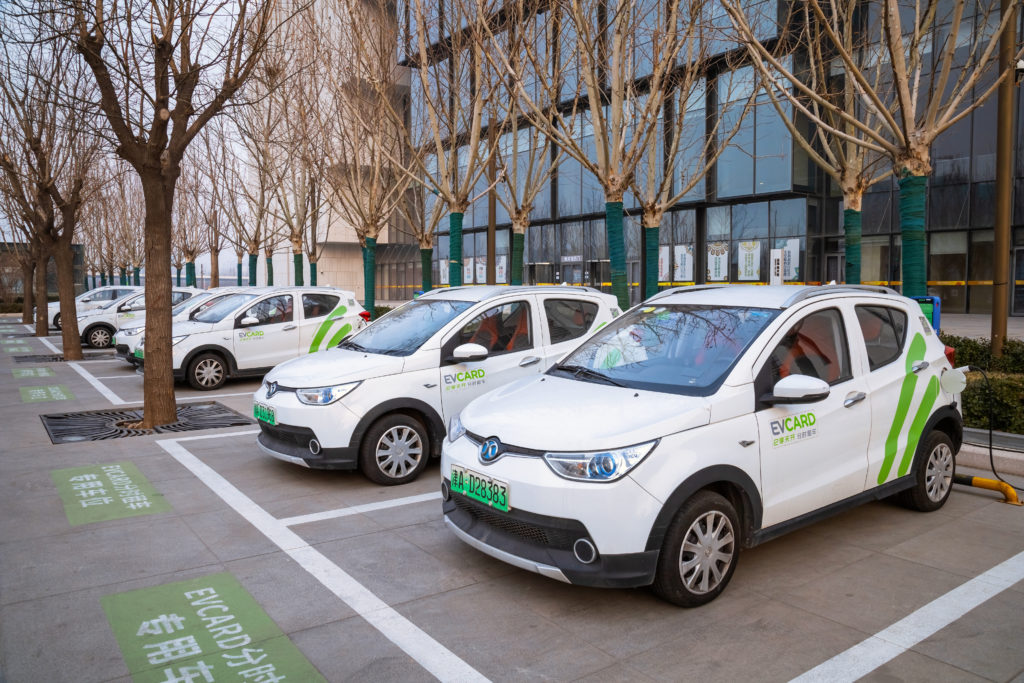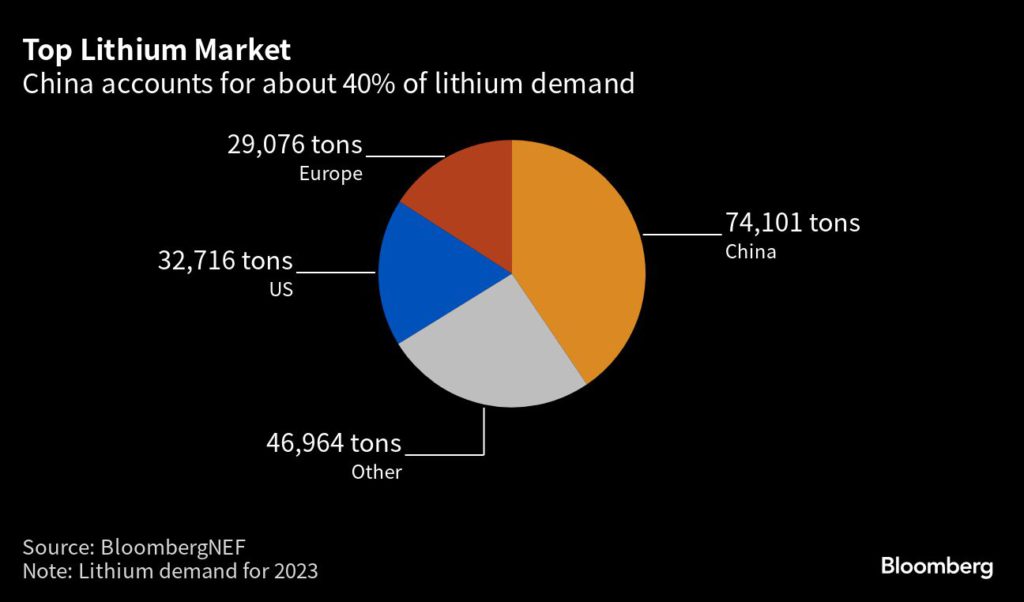Chinese lithium plunge has created huge discount to US prices

Lithium prices are plunging around the world, but the slump is particularly glaring in China, where the key battery metal is trading at a big discount versus the US.
After a buying frenzy sent global prices soaring though last year, they’ve since plunged as electric vehicle demand disappoints and supplies are expected to remain ample. Yet despite the broad rout, futures in the crucial Chinese market are about a third cheaper.
The spread offers traders an opportunity to make money, but also highlights just how bearish the outlook is in the top EV producer. The weakness has been especially pronounced there as battery makers tap stockpiles built up during the boom, while demand concerns are being exacerbated by wider fears about the country’s economy.
“Everybody has a lot of inventory,” said Leon Hoffmann, a broker at SCB Environmental Markets in Switzerland. Chinese traders have been “very bearish and they just kept on selling.”

Chinese sentiment is being hurt by weak consumer and business confidence and an ongoing property crisis. The nation’s EV sales growth slowed to 37% in the second quarter from a year earlier, versus a global average of 50%, according to Counterpoint Research.
That’s helped push most-active Chinese lithium carbonate futures down about 37% since they started trading in July. They’re at a level that works out to a roughly 35% discount to lithium hydroxide futures in the US, according to traders.
Although the two futures contracts have different specifications, the spread is an indication of how each market is faring. It also offers an opportunity to profit from the arbitrage either by trading on paper, or by taking physical delivery of the Chinese contract and then converting the carbonate into hydroxide before selling on.
Despite a rocky start for the Chinese contract, Asian funds in Hong Kong, Shanghai and Singapore have taken advantage of the price difference by buying Chinese futures and selling US ones, Hoffmann said. That has helped increase trading volumes.
“The trade is pretty simple and straightforward,” Hoffmann said. “We’re seeing more involvement from Western traders who like to do this trade.”
Still, the lithium market is a nascent one and low liquidity can lead to large swings and differences in prices. Plus, China’s capital and foreign-exchange controls could complicate arbitrage trading.
And while Western lithium prices are also under pressure, they’re getting some support from battery metal buyers in places like South Korea and Japan who want to take advantage of tax incentives as part of US President Joe Biden’s landmark climate bill.
Even so, the price decline may have further to go. Lithium carbonate and hydroxide could drop another 15% to 20% in the near term on the back of weaker demand, high inventories and improved supply, Citigroup Inc. said.
“Demand is super weak,” Hoffmann said. “The market is in a surplus right now.”
(By Yvonne Yue Li, with assistance from Annie Lee and Mark Burton)
More News
{{ commodity.name }}
{{ post.title }}
{{ post.date }}

Comments